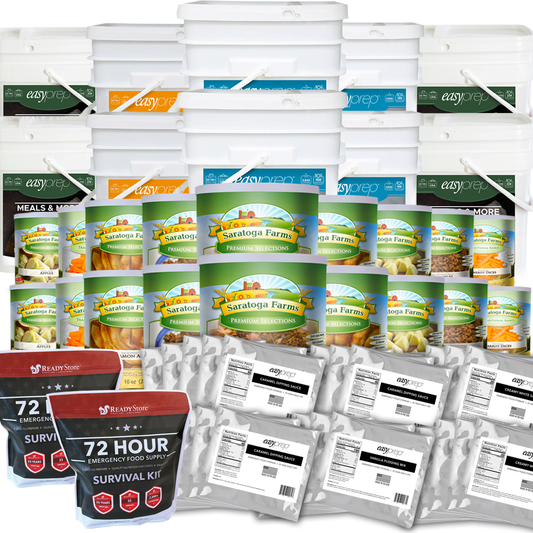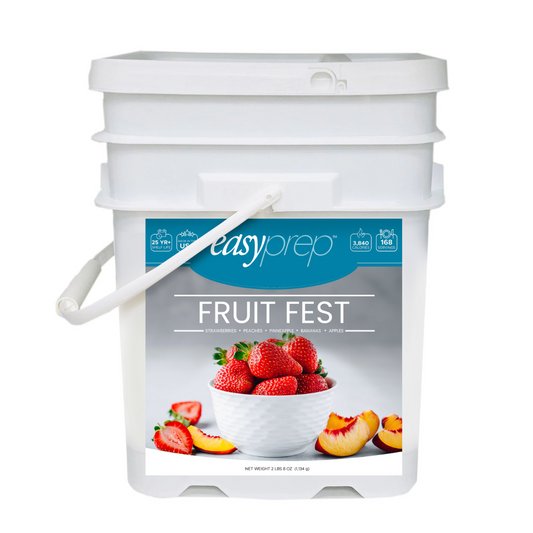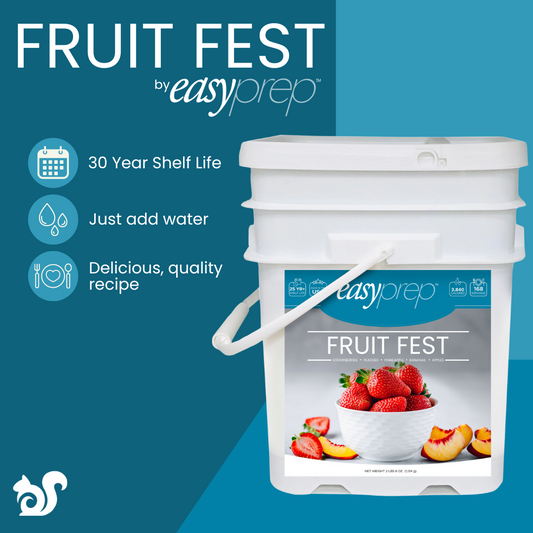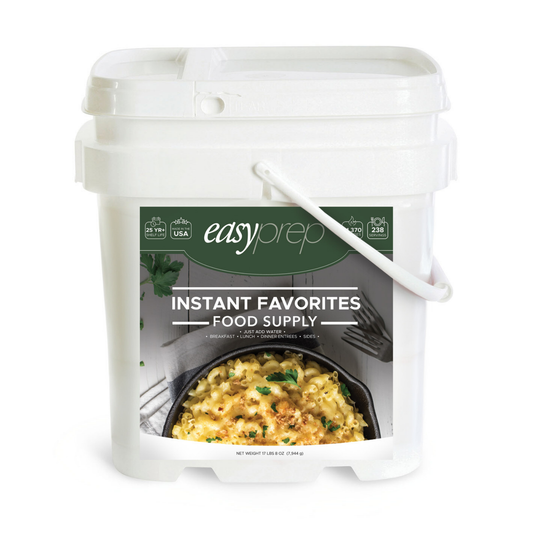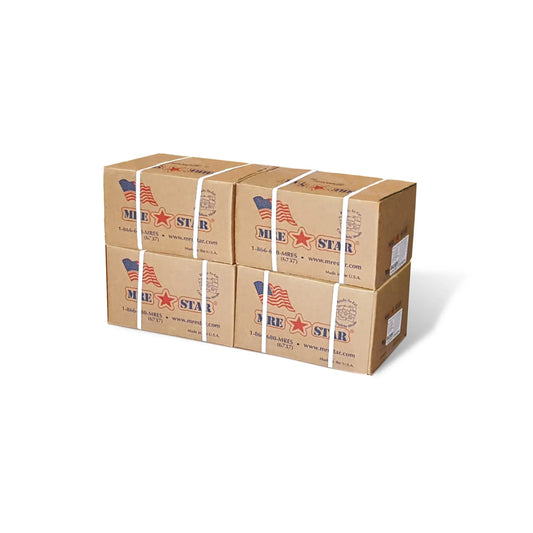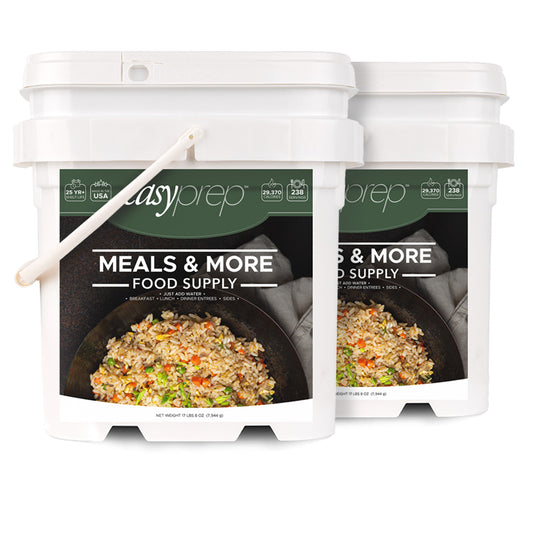What's Edible in the Wild?
10 Feb 2015
This article is an excerpt from Bushcraft: The Ultimate Guide to Survival in the Wilderness by Richard Graves. We would encourage you to continue learning through his book and purchasing it here. Used by permission from Skyhorse Publishing, Inc.
Food and water are essential to living. Under normal conditions a person cannot live longer than three days without water, but one can live ten days or longer without food.
Food, apart from its vitamins, minerals salts and other minute elements, must contain Proteins and Carbohydrates. Proteins are the flesh builders. Carbohydrates are the energy makers- the fuels for your body’s furnace.
 Every action calls for work from some of your body’s cells, and, although new cells are continually being made in your body tissue, old cells are dying. These body tissue cells require replacing, and it is the digestible protein in your food which is used to build those cells.
PROTEINS are supplied by such foods as meat, cheese, nuts, beans and peas.
CARBOHYDRATES are supplied from the starchy foods such as bread, sugar, potatoes, and roots and tubers, and green vegetables and sweets generally, including honey.
For every action you burn up fuel. The more vigorous your actions the more fuel you require, and the faster your body burns it. This fuel is supplied from the carbohydrates in your food. Your body can no more run without this fuel than can the engine of a car if the petrol tank is empty. Your body stores up in its cells reserves of sugars, so that even if you have no food for your stomach, you can draw on these reserves and keep going for a short period.
Your body also needs other foods such as salts and special minerals and vitamins, but in a natural diet most of these essential specialties are contained in the fruits and meats and vegetables which you would eat.
It is possible to have a full stomach at every meal and at the same time to starve to the point of death. If you tried to live entirely on proteins, you might starve for carbohydrates, and, correspondingly, you could be full or carbohydrates but starve from proteins. There should be a balanced proportion of proteins to carbohydrates, and the proportion is, roughly, one part of protein to six parts of carbohydrates.
Another absolute daily essential is salt. Without sufficient sale there can be serious physical consequences. In tropical areas where there is great loss of body salt through excessive perspiration, it is essential to eat sale, and maintain the salt content of the blood at a safe level.
General rules covering the edible qualities of food are set out in the succeeding sections. If there is doubt, take no risk. Eat a small quantity of the suspected food, and await results. If there are no ill-effects the food is probably safe.
All Flesh is Edible
Nearly all flesh, if freshly killed, is safe to eat. The flesh of all mammals, all reptiles and all birds is free from any poisonous contents and safe. But NOT the flesh of all fish.
By “poisonous” is meant actually toxic, that is, containing a poison. An exception in the reptile world is the Hawksbill turtle, which, in the thorax, contains a sac which more learned authorities class as toxic or poisonous.
Parasite Infestations
Every action calls for work from some of your body’s cells, and, although new cells are continually being made in your body tissue, old cells are dying. These body tissue cells require replacing, and it is the digestible protein in your food which is used to build those cells.
PROTEINS are supplied by such foods as meat, cheese, nuts, beans and peas.
CARBOHYDRATES are supplied from the starchy foods such as bread, sugar, potatoes, and roots and tubers, and green vegetables and sweets generally, including honey.
For every action you burn up fuel. The more vigorous your actions the more fuel you require, and the faster your body burns it. This fuel is supplied from the carbohydrates in your food. Your body can no more run without this fuel than can the engine of a car if the petrol tank is empty. Your body stores up in its cells reserves of sugars, so that even if you have no food for your stomach, you can draw on these reserves and keep going for a short period.
Your body also needs other foods such as salts and special minerals and vitamins, but in a natural diet most of these essential specialties are contained in the fruits and meats and vegetables which you would eat.
It is possible to have a full stomach at every meal and at the same time to starve to the point of death. If you tried to live entirely on proteins, you might starve for carbohydrates, and, correspondingly, you could be full or carbohydrates but starve from proteins. There should be a balanced proportion of proteins to carbohydrates, and the proportion is, roughly, one part of protein to six parts of carbohydrates.
Another absolute daily essential is salt. Without sufficient sale there can be serious physical consequences. In tropical areas where there is great loss of body salt through excessive perspiration, it is essential to eat sale, and maintain the salt content of the blood at a safe level.
General rules covering the edible qualities of food are set out in the succeeding sections. If there is doubt, take no risk. Eat a small quantity of the suspected food, and await results. If there are no ill-effects the food is probably safe.
All Flesh is Edible
Nearly all flesh, if freshly killed, is safe to eat. The flesh of all mammals, all reptiles and all birds is free from any poisonous contents and safe. But NOT the flesh of all fish.
By “poisonous” is meant actually toxic, that is, containing a poison. An exception in the reptile world is the Hawksbill turtle, which, in the thorax, contains a sac which more learned authorities class as toxic or poisonous.
Parasite Infestations
 The words “safe to eat” do not mean that the flesh may be eaten with no ill-consequences. It merely means that the flesh itself contains nothing which will be poisonous to adult human beings.
Many animals are hosts to parasites which can be fatal to man if they are introduced into his body. For instance, the flesh of the rabbit may be infested with hydatids, a worm which if it finds entry into a human, can often prove fatal. The ancient Jewish law which declared the pig unclean was undoubtedly based on the observation that eaters of pig meat showed a higher death rate than eaters of other meats. Pigs are commonly infested with parasites which can also make man their host. Hence the law forbidding the eating of pig flesh.
In common with the pig and the rabbit there is always the chance that the flesh of almost any animal (particularly animals which graze close to the earth or which burrow or which frequent fresh water streams) may be infested with parasites dangerous to man, and consequently no flesh is absolutely safe to eat raw, even in emergency. However, the parasites and their eggs are destroyed by heat, and therefore all flesh should be thoroughly cooked before eating.
This particularly applies to all fresh water fish and fresh water shellfish.
Bacterial Decay
Putrefaction and decay are caused by bacterial action. Food is protected commercially by freezing, by salting or pickling, by heating and vacuum sealing, and by many other means. None of these methods which call for equipment are practical in the bush, therefore other methods must be found to preserve meat safely for indefinite periods.
Meat goes bad because of bacterial infection. Bad meat can be fatally poisonous if eaten. When the term “safe to eat” is used it only applies to freshly-killed and fresh meat.
...
Preliminary Cooking
Meat which has been either boiled or baked has in the boiling or backing been made sterile, that is, the bacteria which cause putrefaction have been destroyed, and therefore the meat will remain safe to eat for a short time. Re-cooking will effect further sterilisation and prolong the period during which the meat can be eaten. The time between cooking and the meat can be eaten. The time between cooking and the meat being unsafe to eat depends largely upon the weather; hot humid conditions will make the meat unsafe more rapidly than cool dry conditions.
The presence of blowfly grubs or maggots on meat does not mean that the meat is tainted and unsafe. These maggots do not indicate poisonous properties of decay in the meat. Their presence merely indicated the visit of the female fly, which, seeing suitable conditions for her eggs or larvae, has place them there where they may have food. Meat which has been blown can be washed and eaten with perfect safety. Admittedly the maggots are repulsive, but they are in themselves quite free from actual poison. The blowfly is no guide to the condition of meat. It will blow any meat, putrefied and poisonous or safe.
Edible but not Palatable
The words “safe to eat” do not mean that the flesh may be eaten with no ill-consequences. It merely means that the flesh itself contains nothing which will be poisonous to adult human beings.
Many animals are hosts to parasites which can be fatal to man if they are introduced into his body. For instance, the flesh of the rabbit may be infested with hydatids, a worm which if it finds entry into a human, can often prove fatal. The ancient Jewish law which declared the pig unclean was undoubtedly based on the observation that eaters of pig meat showed a higher death rate than eaters of other meats. Pigs are commonly infested with parasites which can also make man their host. Hence the law forbidding the eating of pig flesh.
In common with the pig and the rabbit there is always the chance that the flesh of almost any animal (particularly animals which graze close to the earth or which burrow or which frequent fresh water streams) may be infested with parasites dangerous to man, and consequently no flesh is absolutely safe to eat raw, even in emergency. However, the parasites and their eggs are destroyed by heat, and therefore all flesh should be thoroughly cooked before eating.
This particularly applies to all fresh water fish and fresh water shellfish.
Bacterial Decay
Putrefaction and decay are caused by bacterial action. Food is protected commercially by freezing, by salting or pickling, by heating and vacuum sealing, and by many other means. None of these methods which call for equipment are practical in the bush, therefore other methods must be found to preserve meat safely for indefinite periods.
Meat goes bad because of bacterial infection. Bad meat can be fatally poisonous if eaten. When the term “safe to eat” is used it only applies to freshly-killed and fresh meat.
...
Preliminary Cooking
Meat which has been either boiled or baked has in the boiling or backing been made sterile, that is, the bacteria which cause putrefaction have been destroyed, and therefore the meat will remain safe to eat for a short time. Re-cooking will effect further sterilisation and prolong the period during which the meat can be eaten. The time between cooking and the meat can be eaten. The time between cooking and the meat being unsafe to eat depends largely upon the weather; hot humid conditions will make the meat unsafe more rapidly than cool dry conditions.
The presence of blowfly grubs or maggots on meat does not mean that the meat is tainted and unsafe. These maggots do not indicate poisonous properties of decay in the meat. Their presence merely indicated the visit of the female fly, which, seeing suitable conditions for her eggs or larvae, has place them there where they may have food. Meat which has been blown can be washed and eaten with perfect safety. Admittedly the maggots are repulsive, but they are in themselves quite free from actual poison. The blowfly is no guide to the condition of meat. It will blow any meat, putrefied and poisonous or safe.
Edible but not Palatable
 To say that meat is safe to eat does not mean that it is palatable. The flesh from a shag or diver (cormorant) is edible, but so strangely “fishy” and “oily” that it is most unpalatable. Nevertheless, in emergency it can provide the proteins necessary to sustain life, and this flesh is wholly digestible.
The flesh of a cat, dog or rat is edible, and if you did not know the origin of the meat prior to its being cooked, you would eat it without repugnance. Cat tastes almost exactly like hare. Flying fox, roasted, is as succulent as sucking pig; and snake, roasted in the ashes, has a white meat of delicate flavour. But you would not say they were palatable, simply because of the source of the meat to your mind would be repulsive.
The rule is that the flesh of all birds, mammals and reptiles is safe to eat, but not all are palatable.
To say that meat is safe to eat does not mean that it is palatable. The flesh from a shag or diver (cormorant) is edible, but so strangely “fishy” and “oily” that it is most unpalatable. Nevertheless, in emergency it can provide the proteins necessary to sustain life, and this flesh is wholly digestible.
The flesh of a cat, dog or rat is edible, and if you did not know the origin of the meat prior to its being cooked, you would eat it without repugnance. Cat tastes almost exactly like hare. Flying fox, roasted, is as succulent as sucking pig; and snake, roasted in the ashes, has a white meat of delicate flavour. But you would not say they were palatable, simply because of the source of the meat to your mind would be repulsive.
The rule is that the flesh of all birds, mammals and reptiles is safe to eat, but not all are palatable.

 Every action calls for work from some of your body’s cells, and, although new cells are continually being made in your body tissue, old cells are dying. These body tissue cells require replacing, and it is the digestible protein in your food which is used to build those cells.
PROTEINS are supplied by such foods as meat, cheese, nuts, beans and peas.
CARBOHYDRATES are supplied from the starchy foods such as bread, sugar, potatoes, and roots and tubers, and green vegetables and sweets generally, including honey.
For every action you burn up fuel. The more vigorous your actions the more fuel you require, and the faster your body burns it. This fuel is supplied from the carbohydrates in your food. Your body can no more run without this fuel than can the engine of a car if the petrol tank is empty. Your body stores up in its cells reserves of sugars, so that even if you have no food for your stomach, you can draw on these reserves and keep going for a short period.
Your body also needs other foods such as salts and special minerals and vitamins, but in a natural diet most of these essential specialties are contained in the fruits and meats and vegetables which you would eat.
It is possible to have a full stomach at every meal and at the same time to starve to the point of death. If you tried to live entirely on proteins, you might starve for carbohydrates, and, correspondingly, you could be full or carbohydrates but starve from proteins. There should be a balanced proportion of proteins to carbohydrates, and the proportion is, roughly, one part of protein to six parts of carbohydrates.
Another absolute daily essential is salt. Without sufficient sale there can be serious physical consequences. In tropical areas where there is great loss of body salt through excessive perspiration, it is essential to eat sale, and maintain the salt content of the blood at a safe level.
General rules covering the edible qualities of food are set out in the succeeding sections. If there is doubt, take no risk. Eat a small quantity of the suspected food, and await results. If there are no ill-effects the food is probably safe.
All Flesh is Edible
Nearly all flesh, if freshly killed, is safe to eat. The flesh of all mammals, all reptiles and all birds is free from any poisonous contents and safe. But NOT the flesh of all fish.
By “poisonous” is meant actually toxic, that is, containing a poison. An exception in the reptile world is the Hawksbill turtle, which, in the thorax, contains a sac which more learned authorities class as toxic or poisonous.
Parasite Infestations
Every action calls for work from some of your body’s cells, and, although new cells are continually being made in your body tissue, old cells are dying. These body tissue cells require replacing, and it is the digestible protein in your food which is used to build those cells.
PROTEINS are supplied by such foods as meat, cheese, nuts, beans and peas.
CARBOHYDRATES are supplied from the starchy foods such as bread, sugar, potatoes, and roots and tubers, and green vegetables and sweets generally, including honey.
For every action you burn up fuel. The more vigorous your actions the more fuel you require, and the faster your body burns it. This fuel is supplied from the carbohydrates in your food. Your body can no more run without this fuel than can the engine of a car if the petrol tank is empty. Your body stores up in its cells reserves of sugars, so that even if you have no food for your stomach, you can draw on these reserves and keep going for a short period.
Your body also needs other foods such as salts and special minerals and vitamins, but in a natural diet most of these essential specialties are contained in the fruits and meats and vegetables which you would eat.
It is possible to have a full stomach at every meal and at the same time to starve to the point of death. If you tried to live entirely on proteins, you might starve for carbohydrates, and, correspondingly, you could be full or carbohydrates but starve from proteins. There should be a balanced proportion of proteins to carbohydrates, and the proportion is, roughly, one part of protein to six parts of carbohydrates.
Another absolute daily essential is salt. Without sufficient sale there can be serious physical consequences. In tropical areas where there is great loss of body salt through excessive perspiration, it is essential to eat sale, and maintain the salt content of the blood at a safe level.
General rules covering the edible qualities of food are set out in the succeeding sections. If there is doubt, take no risk. Eat a small quantity of the suspected food, and await results. If there are no ill-effects the food is probably safe.
All Flesh is Edible
Nearly all flesh, if freshly killed, is safe to eat. The flesh of all mammals, all reptiles and all birds is free from any poisonous contents and safe. But NOT the flesh of all fish.
By “poisonous” is meant actually toxic, that is, containing a poison. An exception in the reptile world is the Hawksbill turtle, which, in the thorax, contains a sac which more learned authorities class as toxic or poisonous.
Parasite Infestations
 The words “safe to eat” do not mean that the flesh may be eaten with no ill-consequences. It merely means that the flesh itself contains nothing which will be poisonous to adult human beings.
Many animals are hosts to parasites which can be fatal to man if they are introduced into his body. For instance, the flesh of the rabbit may be infested with hydatids, a worm which if it finds entry into a human, can often prove fatal. The ancient Jewish law which declared the pig unclean was undoubtedly based on the observation that eaters of pig meat showed a higher death rate than eaters of other meats. Pigs are commonly infested with parasites which can also make man their host. Hence the law forbidding the eating of pig flesh.
In common with the pig and the rabbit there is always the chance that the flesh of almost any animal (particularly animals which graze close to the earth or which burrow or which frequent fresh water streams) may be infested with parasites dangerous to man, and consequently no flesh is absolutely safe to eat raw, even in emergency. However, the parasites and their eggs are destroyed by heat, and therefore all flesh should be thoroughly cooked before eating.
This particularly applies to all fresh water fish and fresh water shellfish.
Bacterial Decay
Putrefaction and decay are caused by bacterial action. Food is protected commercially by freezing, by salting or pickling, by heating and vacuum sealing, and by many other means. None of these methods which call for equipment are practical in the bush, therefore other methods must be found to preserve meat safely for indefinite periods.
Meat goes bad because of bacterial infection. Bad meat can be fatally poisonous if eaten. When the term “safe to eat” is used it only applies to freshly-killed and fresh meat.
...
Preliminary Cooking
Meat which has been either boiled or baked has in the boiling or backing been made sterile, that is, the bacteria which cause putrefaction have been destroyed, and therefore the meat will remain safe to eat for a short time. Re-cooking will effect further sterilisation and prolong the period during which the meat can be eaten. The time between cooking and the meat can be eaten. The time between cooking and the meat being unsafe to eat depends largely upon the weather; hot humid conditions will make the meat unsafe more rapidly than cool dry conditions.
The presence of blowfly grubs or maggots on meat does not mean that the meat is tainted and unsafe. These maggots do not indicate poisonous properties of decay in the meat. Their presence merely indicated the visit of the female fly, which, seeing suitable conditions for her eggs or larvae, has place them there where they may have food. Meat which has been blown can be washed and eaten with perfect safety. Admittedly the maggots are repulsive, but they are in themselves quite free from actual poison. The blowfly is no guide to the condition of meat. It will blow any meat, putrefied and poisonous or safe.
Edible but not Palatable
The words “safe to eat” do not mean that the flesh may be eaten with no ill-consequences. It merely means that the flesh itself contains nothing which will be poisonous to adult human beings.
Many animals are hosts to parasites which can be fatal to man if they are introduced into his body. For instance, the flesh of the rabbit may be infested with hydatids, a worm which if it finds entry into a human, can often prove fatal. The ancient Jewish law which declared the pig unclean was undoubtedly based on the observation that eaters of pig meat showed a higher death rate than eaters of other meats. Pigs are commonly infested with parasites which can also make man their host. Hence the law forbidding the eating of pig flesh.
In common with the pig and the rabbit there is always the chance that the flesh of almost any animal (particularly animals which graze close to the earth or which burrow or which frequent fresh water streams) may be infested with parasites dangerous to man, and consequently no flesh is absolutely safe to eat raw, even in emergency. However, the parasites and their eggs are destroyed by heat, and therefore all flesh should be thoroughly cooked before eating.
This particularly applies to all fresh water fish and fresh water shellfish.
Bacterial Decay
Putrefaction and decay are caused by bacterial action. Food is protected commercially by freezing, by salting or pickling, by heating and vacuum sealing, and by many other means. None of these methods which call for equipment are practical in the bush, therefore other methods must be found to preserve meat safely for indefinite periods.
Meat goes bad because of bacterial infection. Bad meat can be fatally poisonous if eaten. When the term “safe to eat” is used it only applies to freshly-killed and fresh meat.
...
Preliminary Cooking
Meat which has been either boiled or baked has in the boiling or backing been made sterile, that is, the bacteria which cause putrefaction have been destroyed, and therefore the meat will remain safe to eat for a short time. Re-cooking will effect further sterilisation and prolong the period during which the meat can be eaten. The time between cooking and the meat can be eaten. The time between cooking and the meat being unsafe to eat depends largely upon the weather; hot humid conditions will make the meat unsafe more rapidly than cool dry conditions.
The presence of blowfly grubs or maggots on meat does not mean that the meat is tainted and unsafe. These maggots do not indicate poisonous properties of decay in the meat. Their presence merely indicated the visit of the female fly, which, seeing suitable conditions for her eggs or larvae, has place them there where they may have food. Meat which has been blown can be washed and eaten with perfect safety. Admittedly the maggots are repulsive, but they are in themselves quite free from actual poison. The blowfly is no guide to the condition of meat. It will blow any meat, putrefied and poisonous or safe.
Edible but not Palatable
 To say that meat is safe to eat does not mean that it is palatable. The flesh from a shag or diver (cormorant) is edible, but so strangely “fishy” and “oily” that it is most unpalatable. Nevertheless, in emergency it can provide the proteins necessary to sustain life, and this flesh is wholly digestible.
The flesh of a cat, dog or rat is edible, and if you did not know the origin of the meat prior to its being cooked, you would eat it without repugnance. Cat tastes almost exactly like hare. Flying fox, roasted, is as succulent as sucking pig; and snake, roasted in the ashes, has a white meat of delicate flavour. But you would not say they were palatable, simply because of the source of the meat to your mind would be repulsive.
The rule is that the flesh of all birds, mammals and reptiles is safe to eat, but not all are palatable.
To say that meat is safe to eat does not mean that it is palatable. The flesh from a shag or diver (cormorant) is edible, but so strangely “fishy” and “oily” that it is most unpalatable. Nevertheless, in emergency it can provide the proteins necessary to sustain life, and this flesh is wholly digestible.
The flesh of a cat, dog or rat is edible, and if you did not know the origin of the meat prior to its being cooked, you would eat it without repugnance. Cat tastes almost exactly like hare. Flying fox, roasted, is as succulent as sucking pig; and snake, roasted in the ashes, has a white meat of delicate flavour. But you would not say they were palatable, simply because of the source of the meat to your mind would be repulsive.
The rule is that the flesh of all birds, mammals and reptiles is safe to eat, but not all are palatable.



